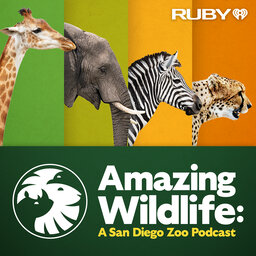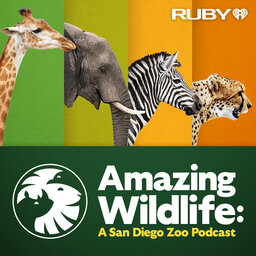The Spiny Anteater That’s Not an Anteater
Rick and Marco highlight a rare and unusual species that's known as a “spiny anteater.” It's the egg-laying echidna! Our hosts are joined by San Diego Zoo Wildlife Alliance senior wildlife care specialists Jen Lebeau and Adam Murdoch to discuss one of the newest species at the San Diego Zoo Safari Park. We learn about puggles (baby echidnas), how courtship behaviors contribute to the breeding process, and why only the male echidnas are Ambassadors at the San Diego Zoo Safari Park. We also find out more about its prickly spines, which resemble a porcupine’s quills, and how it protects itself in the wild.
 Amazing Wildlife: A San Diego Zoo Podcast
Amazing Wildlife: A San Diego Zoo Podcast


